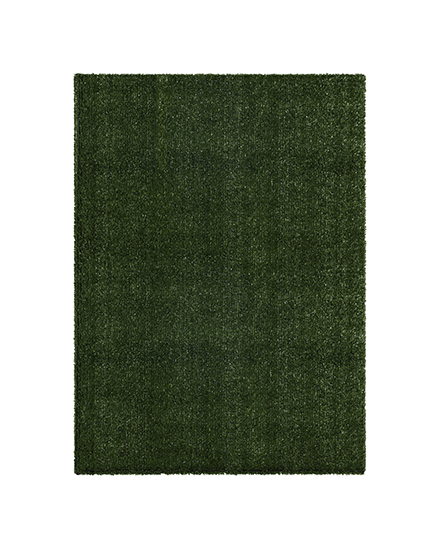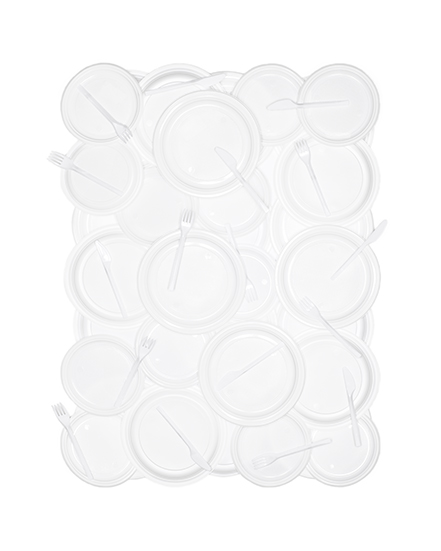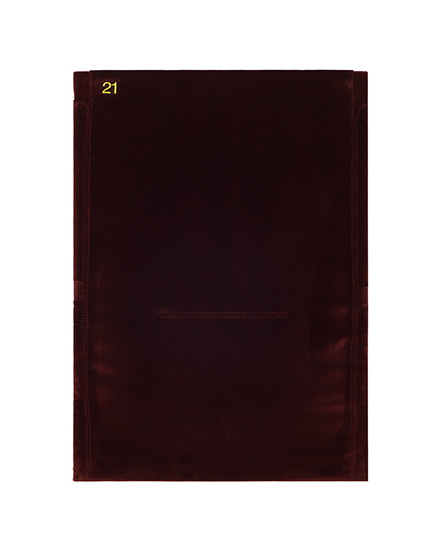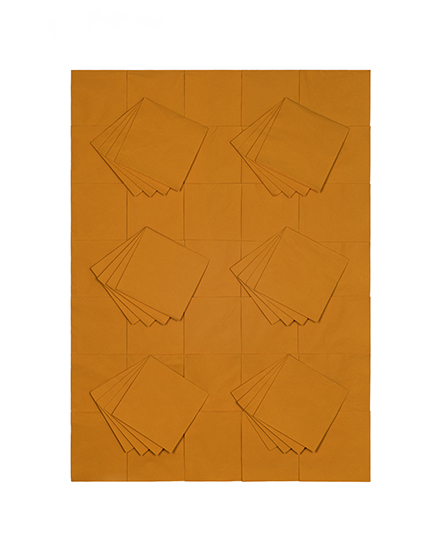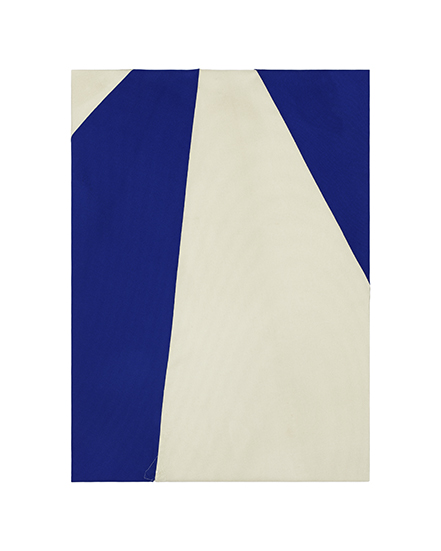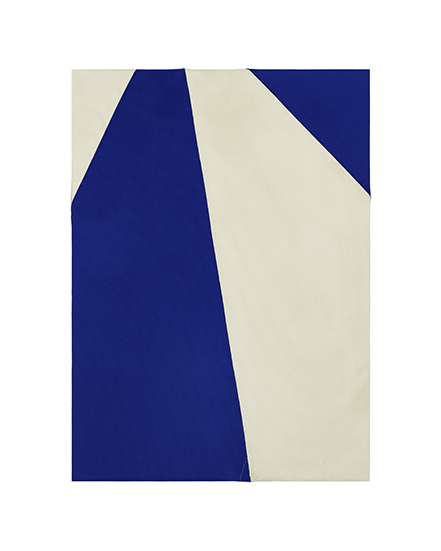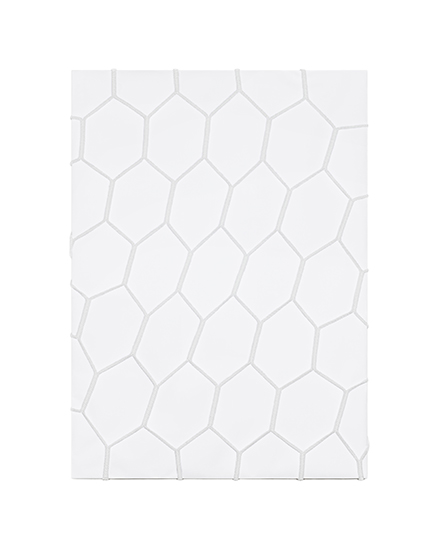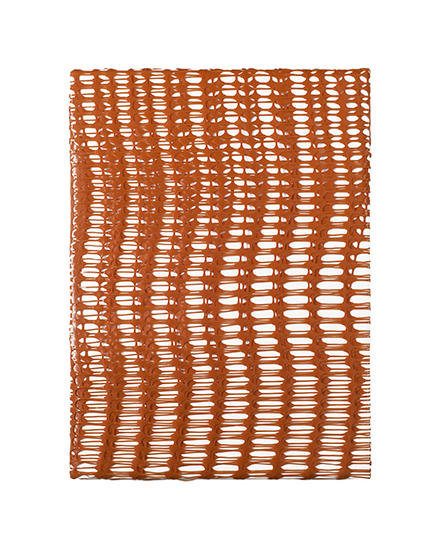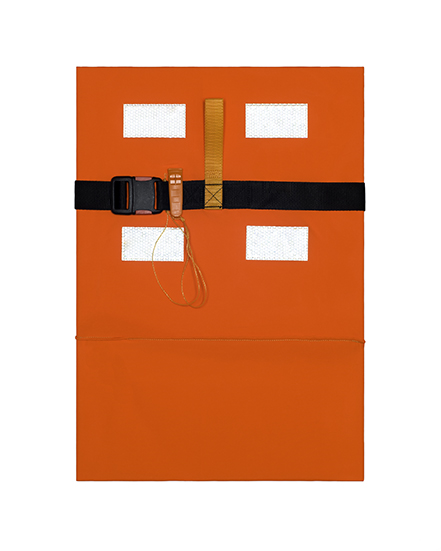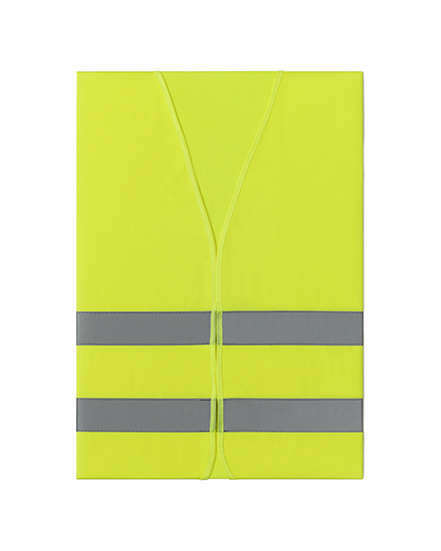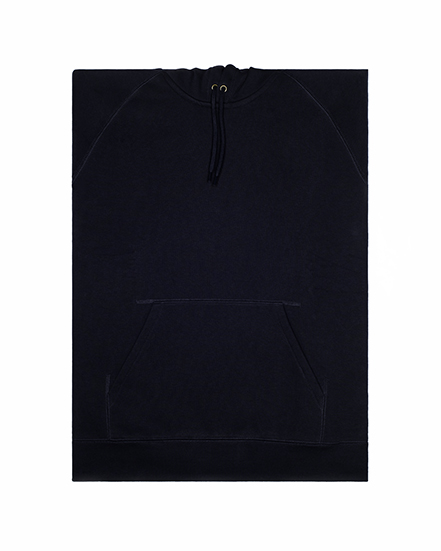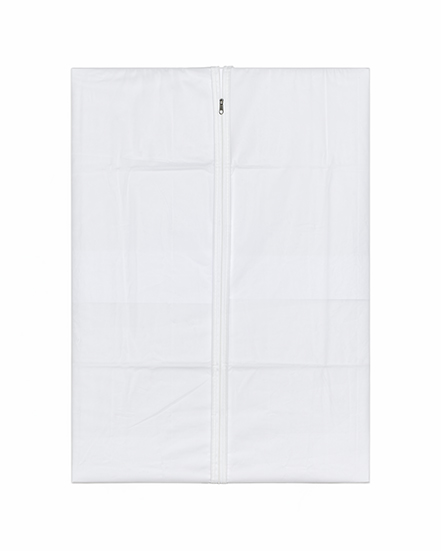WORKS
Life on Art (2019-2020)
Seen from the outside, the world of Art [Western] resembles the planet Mars as we have imagined it for decades in books, films, comics, songs and television series. A very distant planet, inhabited by beings who are morphologically different from earthlings, a planet which inspires curiosity, fascination, mistrust and fear in the earthlings.
The title “Life on Art” derives from “Life on Mars?”, with the question mark removed because there are no doubts about the presence of life on the planet Art. In the “exhibition” and in the “catalogue”, the point of observation is situated outside Art, among the earthlings, who despite the explorations and contacts continue to consider it a foreign reality with which it is difficult to empathise. The unfamiliarity is reciprocated: while the Martian is perceived as an anomaly in the Universe, the earthling is gladly left to his own world and at the doors of the Martian one.
Artificial Grass Meadow, 2020 Polypropylene on plywood base 83 x 60 cm Disassembled Disposed of as plastic | Disposable Plastic, 2019 Polystyrene on plywood base 83 x 60 cm Disassembled Disposed of as plastic |
The “exhibition” reflects on the distance between Earth and Art, a distance that, being based on profound differences, often results in a separation, or even a (mutual) segregation. Through 149 assemblages (or pseudo-assemblages) created using for each one a single object characteristic of living on Earth, the idea was to move terrestrial life, as a whole, onto the planet Art, adapting it to its environment and its forms (the rectangular and almost two-dimensional form of the assemblages also recalls that of paintings and photographs). The life transferred has a Western matrix, but the result would have been the same with an earthly life having other cultural connotations. The effect of the long series of “human” assemblages on the white walls of the (imaginary) exhibition space is alienating and allows us to perceive the sense of inadequacy and discomfort we feel in the presence of Art – if we come from another place. But the opposite is also true: Art remains a mysterious planet, about which earthlings still prefer to have doubts and perplexities (not always justified).
Cinema Armchair, 2020 Velvet on chipboard base 70 x 50 cm Kept as assemblage | Cocktail Napkins, 2019 Paper on chipboard base 70 x 50 cm Disassembled; used |
The captions are the most interesting part of Life on Art. By indicating the destination, at the end of the work, of what was used to create the assemblages depicted in the images, they tell us how the material became available (it was purchased, borrowed, or momentarily removed from my life), but above all they tell us about the environmental and human impact of Life on Art.
The creation of the project contributed to global pollution, no matter how minimally, just as all artistic practices pollute. I thought it was interesting to point this out, because the work of the artist cannot be exempt from the moral obligation not to pollute, or to pollute as little as possible.
The human impact of Life on Art consists in having generated or revitalised relationships between people and between people and objects (the ones remodelled into assemblages), and it is nice that these relationships have come about to limit the environmental damage, particularly to limit the amount of waste. We can almost identify a form of circular economy around Life on Art: the food was largely eaten and the objects not usable by me were donated to those who knew they would use them.
Beach Umbrella n. 1, 2019 Acrylic fabric on plywood base 83 x 60 cm Disassembled Kept as background fabric | Beach Umbrella n. 2, 2019 Acrylic fabric on plywood base 83 x 60 cm Disassembled Kept as background fabric |
/ Ita
Life on Art (2019-2020)
Visto da fuori il mondo dell’Arte [occidentale] assomiglia al pianeta Marte così come da decenni lo immaginiamo in libri, film, fumetti, canzoni e serie televisive. Un pianeta lontanissimo, abitato da esseri morfologicamente diversi dai terrestri, che nei terrestri suscita curiosità, fascino, diffidenza e timore.
Il titolo “Life on Art” deriva da “Life on Mars?”, cui è stato tolto il punto interrogativo perché non ci sono dubbi sulla presenza di vita sul pianeta Arte. Nella “mostra” e nel “catalogo” il punto di osservazione è situato fuori da Arte, tra i terrestri, che nonostante le esplorazioni e i contatti continuano a considerarlo una realtà estranea con cui è difficile empatizzare. L’estraneità è corrisposta: se il marziano è percepito come un’anomalia dell’Universo, il terrestre viene lasciato volentieri al suo mondo e alle porte di quello marziano.
Ball Carry Net, 2020 Polyethylene on plywood base covered by white paper 83 x 60 cm Disassembled Given as a gift | Construction Safety Fence, 2020 High density polyethylene on plywood base covered by white paper 83 x 60 cm Disassembled Given as a gift |
La “mostra” riflette sulla distanza che intercorre tra Terra e Arte, una distanza che fondandosi su differenze profonde si risolve spesso in una separazione, quando non in una (reciproca) segregazione. Attraverso 149 assemblage (o pseudo-assemblage) realizzati utilizzando per ognuno un unico oggetto proprio dell’abitare la Terra, si è immaginato di traslare la vita terrestre, nel suo insieme, sul pianeta Arte, adattandola al suo ambiente e alle sue forme (la forma rettangolare e pressoché bidimensionale degli assemblage richiama anche quella di dipinti e fotografie). La vita trasferita è di matrice occidentale ma il risultato sarebbe stato il medesimo con una vita terrestre avente altre connotazioni culturali. L’effetto della lunga serie di assemblage “umani” sulle pareti bianche dello spazio espositivo (immaginario) è straniante e lascia percepire il senso di inadeguatezza e disagio che si prova al cospetto dell’Arte – se si proviene da un altro luogo. Ma è vero anche il contrario: Arte rimane un pianeta misterioso, su cui il terrestre preferisce avere ancora dubbi e perplessità (non sempre motivati).
Life Jacket, 2020 Polyethylene on plywood base 60 x 42 cm Kept as assemblage | Yellow Vest, 2020 Polyester on plywood base 48,5 x 34 cm Disassembled; given as a gift |
Le didascalie sono la parte più interessante di Life on Art. Indicandoci la destinazione, al termine del lavoro, di ciò che è stato utilizzato per realizzare gli assemblage riprodotti nelle immagini, esse ci mettono al corrente del modo in cui il materiale si era reso disponibile (era stato acquistato, preso in prestito o tolto momentaneamente dalla mia vita) ma soprattutto dell’impatto ambientale e umano di Life on Art.
La realizzazione del progetto ha contribuito all’inquinamento globale, non importa se in minima parte, così come inquinano tutte le pratiche artistiche. Mi è sembrato interessante segnalarlo, perché l’operato dell’artista non può essere esonerato dall’obbligo morale di non inquinare, o di inquinare il meno possibile.
L’impatto umano di Life on Art consiste nell’aver generato o rivitalizzato relazioni tra le persone e tra le persone e gli oggetti (quelli rimodellati in assemblage) ed è bello che esse siano nate per contenere i danni ambientali, in particolare per limitare la quantità di rifiuti. Possiamo quasi individuare una forma di economia circolare intorno a Life on Art: il cibo è stato in gran parte mangiato e gli oggetti non utilizzabili da me sono stati donati a chi sapeva che li avrebbe usati.
Hoodie, 2019 Cotton on chipboard base 70 x 50 cm Disassembled Given as a gift | Wardrobe Storage Bag, 2019 Polypropylene on chipboard base 70 x 50 cm Disassembled Kept for future use |
